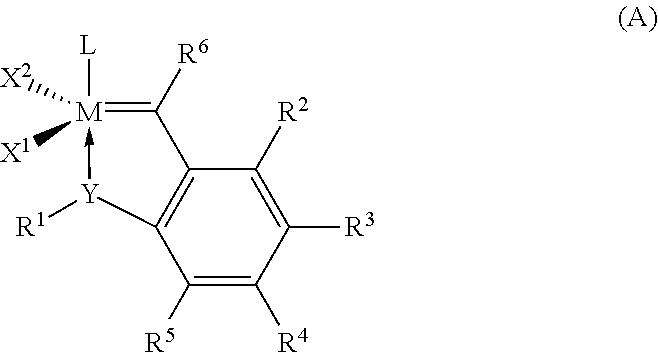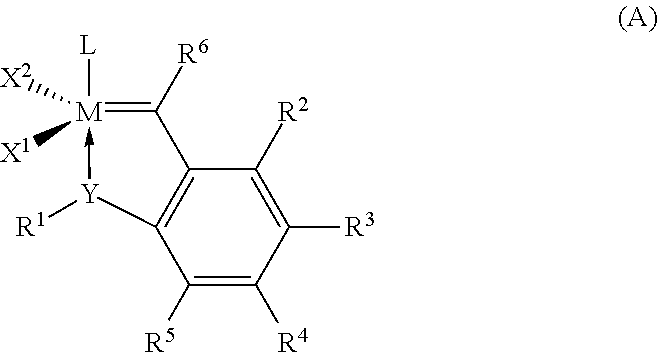Hydrogenation of a diene-based polymer latex
- Summary
- Abstract
- Description
- Claims
- Application Information
AI Technical Summary
Benefits of technology
Problems solved by technology
Method used
Image
Examples
example 1-8
Direct Hydrogenation of the Polymer Latex
example 1
[0180]The hydrogenation reaction was carried out in a 300 mL Parr 316 Stainless Steel reactor. First 25 ml of the NBR latex identified in Table 1 and 75 ml water were charged into the reactor. The solid HG2 catalyst (0.00487 g) was placed in a catalyst addition device which was installed in the head of the reactor. After assembling the reactor, the NBR latex was degassed by bubbling nitrogen gas under about 200 psi (1.38 MPa) for 20 min at room temperature and the system was then heated to 100° C. Then, the catalyst was added into the NBR latex with 1000 psi (6.89 MPa) hydrogen gas. The hydrogen pressure and reaction temperature were kept constant throughout the reaction period. The hydrogenated NBR latex was sampled through a dip tube into the reactor at intervals during the reaction. The hydrogenation result is shown in Table 2. After 4 hours, the hydrogenation degree reaches 98%. No visible gel was generated and the resultant hydrogenated NBR (“HNBR”) polymer was tested to be eas...
example 2
[0182]The same procedure as described in example 1 was employed except that only 0.00244 g of HG2 catalyst were added. After 19 hours, a hydrogenation degree of 90% was achieved without any visible gel.
PUM
| Property | Measurement | Unit |
|---|---|---|
| Temperature | aaaaa | aaaaa |
| Temperature | aaaaa | aaaaa |
| Temperature | aaaaa | aaaaa |
Abstract
Description
Claims
Application Information
 Login to View More
Login to View More - R&D
- Intellectual Property
- Life Sciences
- Materials
- Tech Scout
- Unparalleled Data Quality
- Higher Quality Content
- 60% Fewer Hallucinations
Browse by: Latest US Patents, China's latest patents, Technical Efficacy Thesaurus, Application Domain, Technology Topic, Popular Technical Reports.
© 2025 PatSnap. All rights reserved.Legal|Privacy policy|Modern Slavery Act Transparency Statement|Sitemap|About US| Contact US: help@patsnap.com



